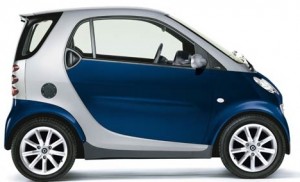![]()
Have your say, share your thoughts with other readers
It is probably an understatement to say that the logo for the London Olympics has received quite a few negative comments. At its launch in June 2007, the identity was criticised by the media, the creative industry and members of the public. Not the most auspicious of starts!
However, after five years of invading our consciousness, it seems to me that the London 2012 logo design is finally beginning to find its place in our hearts. Whilst there are still some inevitable voices of criticism, the brand has established itself as a proud visual landmark and an instantly recognisable symbol of what we all hope will be a vibrant, exciting and successful Olympic games.
Pic. London Olympics 2012 logo, designed by Wolff Olins in 2007
As designers responsible for creating the future, the scenario outlined above is a common response. As human beings we are often resistant to change and very quick to make rash and hasty expressions of taste, criticising and discounting a design because its newness makes us feel uncomfortable or challenged.
But isn’t this one of design’s fundamental purposes? To question, to provoke, to push us for a response? Future-focused design should change our expectations, make us stop, look again and get us talking. Quite often, the work that’s aesthetically challenging will live longer in our minds than the beautiful norm – and whilst provocative design can sometimes meet with initial criticism, it is these ideas that are more likely to be clearly understood, embraced and remembered in the long-term.
From the Eiffel Tower to Dali’s modernist visions in Barcelona, the concrete jungle of London’s Barbican Centre to the Flatiron Building in New York, bold architectural design is often initially hated to become eventually loved, forming some of the cultural reference points against which we position ourselves and our national identities. Time and familiarity will often soften our initial hostility to the new or the changed and we shouldn’t be scared of provoking a reaction.
The brands that have the confidence and assertion to express themselves in new and challenging design statements are the ones that will be well-respected leaders both within and beyond their industries. New challenger brands that are bursting onto the scene with a raw energy need design to create a fascination, attraction and reaction. Similarly, established brands have to change and grow as they move into the future and, if they are to progress, the way they express themselves through design has to grow with them. Growing up is not a bad thing, as long as the brand stays true to the original values and adopts an aspect of a challenger approach to keep its design fresh, relevant and exciting.
Pic. Smart car
In the automobile market, the launch of the Smart Car heralded a totally new solution to city driving. Designed to park perpendicular to a curb, its unusual visual design was initially criticised but it created a totally new approach to car transport and is now copied by many of the competing brands. Imitation is the sincerest form of flattery, right? A similar transition from criticism to imitation could also be said for the Toyota Prius. Pepsi launched its most recent redesign with the ‘smile’ to a wave of criticism. However, it will be interesting to see if and how perceptions change with time. Maybe people will warm to the shift towards a cleaner and simpler design that attempts to break through the cluttered beverage aisle? Maybe, maybe not, time will tell.
Pic. Pepsi ‘smile’ redesign by Arnell Group, 2008
Ultimately brands need to be disruptive, but they must make changes for the right reasons. Therefore, a strategy that defines the brand’s future path is essential. Brands need to ensure that their direction and purpose remain central in their vision and aesthetic. If this is the case, and despite definitive design statements that may cause initial shock, we will undoubtedly come to know, understand, recognise and love these brands, as they establish a secure place in our hearts and minds. Let’s invite some criticism!
About the Author
Darren Foley, Managing Director at Pearlfisher, London, joined the company in 2002 as Realisation Director, inventing the concept of realisation and advocating a design process in which our technical and creative teams work in harmony from the beginning. He has worked in the design industry for close to 25 years, starting out as a junior production artist, and amassing an unparalleled depth of knowledge for the discipline.



